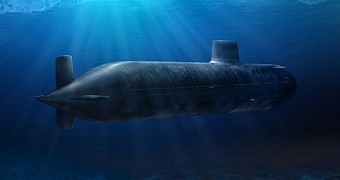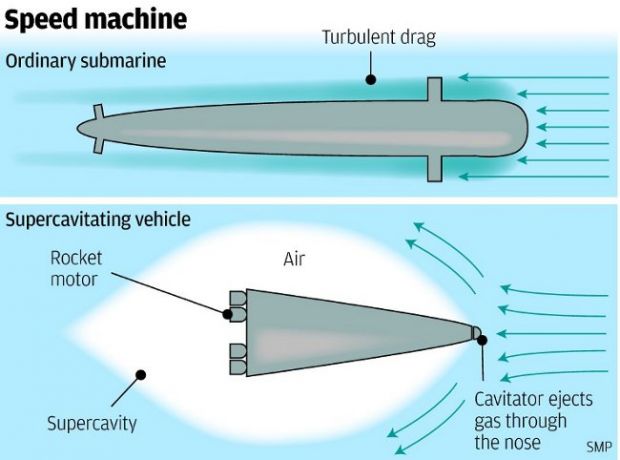Late last week, the South China Morning Post announced to the world that it might not be long until the world's first supersonic submarine embarked on its maiden voyage.
Granted, this submarine hasn't even been built yet, but the Chinese scientists working on designing it claim to have made considerable progress and to have the technology needed to complete this project all figured out.
Long story short, these brainiacs say that their supersonic submarine will employ a technology known to the scientific community as supercavitation. Now don't go scratching your heads just yet.
Supercavitation boils down to enveloping a submerged vessel in a bubble of air in order to reduce drag and make it possible for the vessel to travel at considerable speeds under water.
Check out the image below to get a better idea of what one such air bubble is supposed to look like and how this technology can – in theory – lead to the development of super-fast submarines.
The Soviets were the ones who first started looking into supercavitation back in the 1960s, during the Cold War, but only because they wanted to use this technology to make better torpedoes. No surprise here.
In case anyone was wondering, the Soviets did manage to use this technology to make a high-speed torpedo, the Shkval. This torpedo sported a nose cone that created the air bubble and enabled it to reach speeds of about 370 kilometers per hour (230 miles per hour).
Scientists in China are convinced that they too can use supercavitation to get a submarine to travel at impressive speeds. In fact, word has it that they expect their submarine to be able to travel at a whopping 5,800 kilometers per hour (roughly 3,600 miles per hour).
As detailed by Phys Org, the trouble with building one such high-speed submarine is that, in order to enter supercavitation state, the vessel would have to be launched at about 100 kilometers per hour (62.13 miles per hour). This launch speed is needed to produce and maintain the air bubble.
Chinese researchers claim that this can be achieved by coating the submarine with a special liquid membrane. This membrane would serve to reduce drag while the vessel is traveling at a fairly low speed, and would make it possible for it to get fast enough to enter supercavitation state.
“By combining liquid-membrane technology with supercavitation we can significantly reduce the launch challenges and make cruising control easier,” Li Fengchen, professor of fluid machinery and engineering, told the press in a recent interview.
Granted, the scientists haven't yet figured out how one would steer one such supersonic submarine and are clueless about which type of engine would be best suited for it, but at least they are optimistic about their work and about what the future has in store for them.

 14 DAY TRIAL //
14 DAY TRIAL // 

